Guardbridge, Main Street, Paper Mill
Distillery (19th Century), Paper Mill (19th Century), University (Early 21st Century)
Site Name Guardbridge, Main Street, Paper Mill
Classification Distillery (19th Century), Paper Mill (19th Century), University (Early 21st Century)
Alternative Name(s) Guardbridge, Seggie Distillery; Curtis Fine Papers; White Pine Company; Eden Campus
Canmore ID 131474
Site Number NO41NE 62
NGR NO 4507 1953
Datum OSGB36 - NGR
Permalink http://canmore.org.uk/site/131474

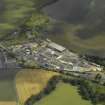
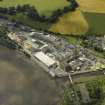
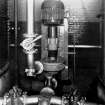




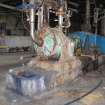
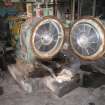

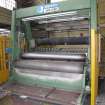



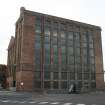

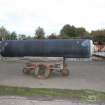

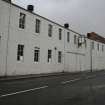



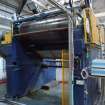



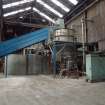











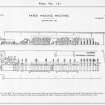
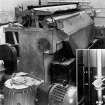
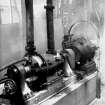
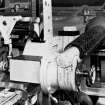
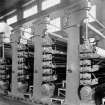
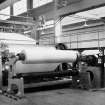





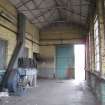
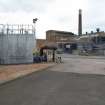



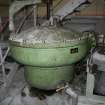


![General view of West Yard (South) looking north west. Building 20 (original No.3 Paper Machine House) [pre-1888] to left.](http://i.rcahms.gov.uk/canmore/s/DP00072073.jpg)
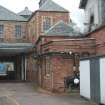

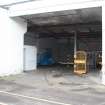
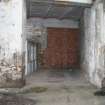

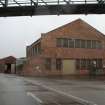
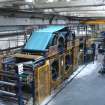




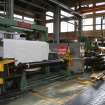


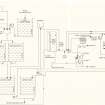


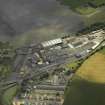
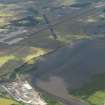
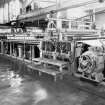









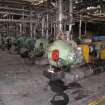

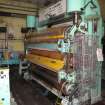






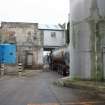


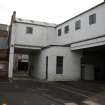
First 100 images shown. See the Collections panel (below) for a link to all digital images.
- Council Fife
- Parish Leuchars
- Former Region Fife
- Former District North East Fife
- Former County Fife
NO41NE 62 4507 1953
Paper Mill [NAT]
OS 1:10,000 map, 1982.
Built as a distillery c. 1810 and redeveloped as a paper mill from 1872.
J Gifford 1988.
(Location cited as NO 451 195). Paper mills, founded 1872 by the Guard Bridge White Pine Co Ltd. Large group of mainly brick-built buildings of various dates with 3 tall circular-section brick chimneys.
J R Hume 1976.
Factory - storage sheds, chimneys, drains into foreshore.
Site recorded by Maritime Fife during the Coastal Assessment Survey for Historic Scotland, Fife Ness to Newburgh 1996.
The survey of Guardbridge Paper Mill was a joint field recording initiative between the Royal Commissions on the Ancient and Historical Monuments of Scotland and of Wales to coincide with the centenary year of both organisations. Its aim was to foster an exchange of approaches to, and techniques of, site recording, in particular industrial process recording, and to explore the practicality of making a worthwhile record of operations of a large, complex working site within limited field time. It was agreed from the outset to concentrate on the operation of the mill, rather than its architectural qualities, as being the most effective and useful way of producing a permanent record while the opportunity was available. The practical difficulties encountered during the project included obtaining access to an operational industrial site with associated health and safety considerations (all visitors were accompanied at all times), commercial sensitivity regarding the process, the confidential and security aspects of the products and the limited fieldwork time available.
In 2000 there were some sixteen paper mills in Scotland, manufacturing products ranging from packaging materials to graphics papers, carbonless copy papers, paper bags, coated papers and board. By October 2009, twelve of these had closed, including all three of the high quality graphics papers producers.
The paper mill at Guardbridge was chosen for recording because it fulfilled several criteria; the works was considered to be of historical importance as it had been in existence on the same site since the 1870s and there were many and varied buildings and structures illustrating the continuous development of the site; it was easily accessible and relatively compact, and it was still active manufacturing its original product. The site was unique, and it was decided that a record should be made on those grounds alone, yet typical in that standard items of plant were used here as elsewhere. The machinery in use spanned a wide date range and, although everyone is familiar with the finished product and the process is broadly understood, papermaking is a much more complex process than is at first perceived, and thus worth recording from an archaeological perspective, so that others may use the results to identify features at similar types of site. As is so often the case with industrial sites, the buildings are generally of secondary importance to the processes carried on within, and this should be reflected in the type of recording undertaken.
Guardbridge Paper Mill is situated some 12 km south-east of Dundee and 6 km north-west of St Andrews, where the River Eden widens into an estuary and is joined by the Motray Water. The main production part of the site, covering some 6.7 ha, is bounded to the north by the Motray, to the east by the Eden estuary and to the west by the A919 road (Main Street); the full extent of the site, however, occupied an area of some 16.5 ha. Its first recorded use was in 1810 when William Haig, of the whisky family, founded Seggie Distillery. In 1873, members of the Haig family established the Guard Bridge Paper Company, utilising buildings from the former distillery.
By 1896 the site had expanded, with the morphology on the south and along the west elevation to Main Street showing a similarity to the footprint of the earlier buildings. The expansion continued, modestly but steadily, with the addition of new buildings through the early twentieth century. By the late twentieth century, the northern part of the site, in particular, appears to have been altered considerably, with the erection of a new boiler house in 1949, a calender house in 1952 and the effluent treatment plant in 1991–1992. Generally, though, the site retains a dense mix of mid to late nineteenth century brick built buildings and early nineteenth century masonry elements with twentieth century insertions and additions. The west elevation of the site, facing onto Main Street, incorporates earlier walls which relate to the distillery period of 1810. Building 10, a former rag store, Building 11 (former oil store), and Building 12 (former brass store), all have rebuilt masonry west elevations with masonry rear walls facing onto West Yard (central) 9. Building 13, formerly a bleach plant, also has a masonry wall facing onto West Yard (central); however, it is much altered, with the west elevation rebuilt in brick after 1888. There are other masonry walls evident on the south and west elevations of the former additional rag store, opposite Building 10, as well as fragments of masonry walls in the ground floor of Building 4 (below broke recovery). The remainder of Building 4 (originally stock preparation for No.1 Paper Machine, latterly broke recovery) is of brick construction and pre-dates 1888. Other possible late distillery-related buildings (prior to 1860) are: Building 14, former engine/motor house for the original No. 3 Paper Machine; Building 15, formerly stock preparation for original No. 3 Paper Machine; Building 13, bleach plant; Building 16, with its tall and narrow proportions, previously a dye house; and Building 19, originally housing Paper Machines Nos. 1 and 2, later the ‘new’ No. 3 Paper Machine. The homogeneity of style of this group of polychrome brick buildings, along with their cramped arrangement, differs somewhat from others on the site, such as building 20 (1887), which originally housed No. 3 Paper Machine. However, Chalmers and Co., which operated the site in the early 1870s, carried out some rebuilding in 1870–1871. Power for the mill was originally provided exclusively by steam engines, but from the 1880s steam power was increasingly used to drive electric generators. Although electric power eventually prevailed, steam was still required for the process, notably for heating and drying. The great quantities of ash produced from the coal-fired boilers, along with other bulky waste products, were tipped into the estuary to create land for expansion of the site. There were two steam turbines at the mill, a Metropolitan-Vickers 3.5 MW turbine installed in 1929 and taken out of use in the 1950s and a British Thomson-Houston 5 MW turbine, dating from about 1950 and decommissioned in 1982, after which electricity was taken from the National Grid. Both turbines provided electricity for the mill and the exhaust steam was used both in the papermaking process and for space heating in the works. The car park to the west of the mill is the site of the former condensing pond for the turbines; it was infilled with brick and rubble from the demolished transit sheds in the 1980s. In 1968 fuel oil superseded coal as a primary energy source for the steam boilers and in 1985 natural gas was introduced. The esparto boilers were decommissioned in the 1970s.
Curtis Fine Papers went into administration in July 2008 and the mill closed down. This unfortunate event had an unexpected beneficial effect on the recording programme, since what had already been recorded under supervision of the process at work could be supplemented by a more thorough investigation of the now non-operational works, with fewer restrictions. It became apparent that substantial parts of the site had been made redundant by the development of newer technologies and introduction of different materials. The papermaking process at Guardbridge had been concentrated into a central core of operation, which was undoubtedly more effective, but left huge spaces and buildings within the complex virtually abandoned, with little physical evidence of their former use. This underlines the value of recording processes while they are still active. The various process flowlines at the mill were well documented by the company as there were stringent environmental conditions to fulfill, particularly with regard to waste disposal and fire precautions (the mill had its own fire service at one time). However, it was still necessary to inspect operations at first hand with someone familiar with the processes to confirm details, for example, whether all the equipment was still in use for its documented function.
The key to accurate process recording is, of course, speaking to the people involved: contact with the current staff was complemented by speaking to others who had worked at the site, who proved to be an invaluable source of information when trying to understand the finer details of the papermaking process. Investigation of process will give an insight into the roles and relative importance of buildings and structures. The resulting records are valuable not only in their own right but also help in an understanding of the spatial layout of a workspace when the original human element is no longer present.
Information from RCAHMS (MMcD,2010)
Publication Account (1967)
About 30 licenses a year were granted for papermills in Scotland between 1780 and 1800 (300-400 in England in the same period) but unclear how many actually operated. By 1800, 1000 tons of paper a year was being produced in Scotland. In 1830, 76 Scottish mills were listed in the Excise Return with 19 converted to ther uses or silent. The remaining 57 (30 had machines) were producing more paper than England. By 1800 Scottish mills providing 9% of the UK output of paper. By 1850, this stood at 22% of total UK output.
CDM Ketelbey, 1967
Watching Brief (12 August 2021 - 14 September 2021)
NO 45048 19510 (centred) GUARD Archaeology Limited undertook an archaeological watching brief during ground breaking works associated with the installation of the District Heating Network to provide for the future Eden Campus in Guardbridge, Fife. This work did not reveal any significant archaeological features or finds.
Information from J. Ignacio De Vicente Ojeda - GUARD Archaeology Limited, 2021.
OASIS ID: guardarc1-434065





























































![General view of West Yard (South) looking north west. Building 20 (original No.3 Paper Machine House) [pre-1888] to left.](http://i.rcahms.gov.uk/canmore/l/DP00072073.jpg)











































